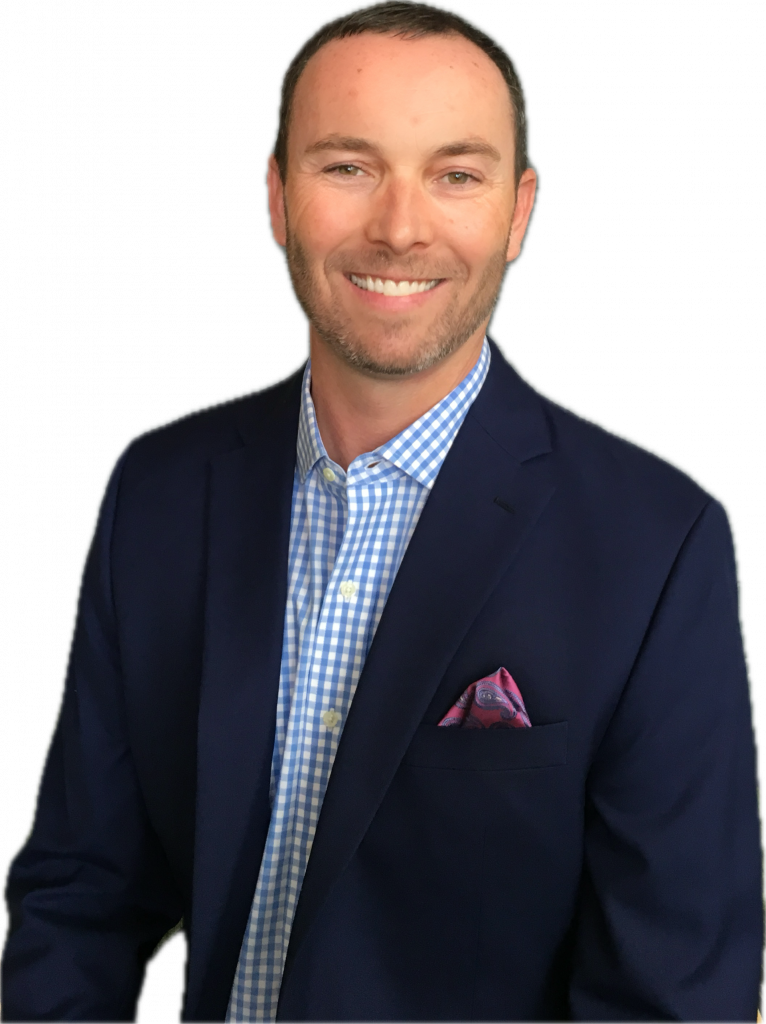If you talk with me about real estate, you will soon find out that I am
a huge fan of passively investing in private syndications. However, my initial investments into syndications did
not go well. You may wonder why I trusted any syndicators after those
experiences.
After witnessing my net worth plummet after each stock market crash in
2000-01 and 2008, I was desperate to get some of my money off the “Wall Street
roller coaster”. After reading books about alternative investments and
attending local real estate conferences, I stumbled upon a group that was
looking for investors interested in speculative, oil and gas syndications. The
double-digit, cash-on-cash, pro forma returns were mesmerizing, and being able
to deduct a large percentage of the intangible drilling costs off my taxable
income was appealing. I vetted the group as much as I could by doing searches
online and talking with a few of their early investors. After reading the legal
documents, such as the private placement memorandum and the operating agreement,
I mailed my check to the company in Texas in 2009.
I started to receive some small distributions within a couple of months.
That was enough proof of concept for me. I proceeded to invest in a few more of
their speculative oil wells over the next few months. After another six months,
the frequency and amount of the checks began to diminish. The communication
also dwindled. And then everything stopped. Other than a handful of small
checks and getting the tax deductions, I lost all of my original capital. It
took a few years for me to figure out what had happened. Some articles online
revealed that this group had scammed over a hundred investors for several
million dollars.
Six years later and after a short stint in actively investing in small,
residential buy-and-holds, I decided to get back into the syndication game as a
passive investor. Even with my experience in the oil and gas debacle, I still
made some mistakes with those next investments.
Here are 13 valuable lessons I have learned personally and from others
in my ongoing involvement with syndications and their sponsors.
Get sponsor referrals from passive investors who you
know, like, and trust
When I wired my money to the oil and gas sponsors, I did not have any
friends or acquaintances who had invested with them. Be leery of referrals from
the sponsors. Who knows if they are actual investors? If you have a friend who
has invested in four deals with Sally the Syndicator over the past six years
and tells you that she communicates with her investors regularly and gives out
steady distributions, wouldn’t you feel more comfortable about sending your
money to Sally? Don’t reinvent the wheel – learn from the past experiences of
others. This brings me to my next point.
Network, network, network!
Even when I got back into syndications in 2016, I still did not know
anyone who was doing what I was doing. I went to several local real estate
meet-ups, and they were always talking about flipping houses and adding
single-family homes to their portfolios. I eventually attended some national
conferences on real estate syndications which did help expand my network.
A little over two years ago, I got an email regarding the next meeting
for a local real estate investing group (not Left Field Investors). The speaker
was going to be Jim Pfeifer, who was the head of that group, and he was going
to talk about his transition to full-time passive investing. I emailed Jim
immediately and told him that I was also getting involved in syndication
investing. We ended up having coffee together and discovered that we had even
invested in some of the same deals! This gave me the confidence that what I was
doing maybe wasn’t so crazy after all!
As an introvert, networking does not come naturally to
me. I tell myself that I need to get out of my comfort zone and chat with
strangers at these meetings. Bringing a friend can certainly help your
confidence. There are more and more conferences[1] catering to passive
investors, and they are also a great way to meet sponsors one-on-one. As you
continue to network, the chances that you will meet people who can help you
attain your goals will increase exponentially.
Invest in yourself
How much is your time worth? Randomly finding information on the
internet can certainly be one way of educating yourself on a topic, but it is
usually inefficient and insufficient. When I was first learning about
syndications, I read books and blogs and listened to countless podcasts. But it wasn’t until I paid to attend a few conferences on syndications
that I had a better handle on vetting sponsors and deals. Attending these
weekend seminars helped me to compress time frames. If you are interested in a
certain asset class, read books and listen to podcasts pertaining to that
sector. There are many home study and live virtual courses that will give you
confidence in learning about passive investing.
Back in 2009, I wish I had a group where I could discuss investment
ideas. Join a network like the Infield where we talk about all
aspects of investing in tangible, cashflowing assets in our private forum and
during our Mound Visits – weekly calls lead by one of the founders.
Wait one year before investing again with the same
sponsor (if this is your first deal with them)
I wish I heard this advice before I sent my second check to those oil
and gas syndicators. I recently learned this excellent rule from one of the
members of our Infield Community, David Shirkey, who also runs his own investing and
networking group. One year will give you enough time to see if the syndicator provides
detailed and regular updates and to see if the distributions are close to the
first year’s pro forma numbers. This can be a tough rule to follow if they have
good deal flow and if all their deals look like home runs. But this can give
you a chance to practice the next lesson.
Diversify your investments by asset type, sponsor,
geography, timing, and debt/equity deals
I do not consider myself a general partner-level expert in any asset
class. When I invest with a sponsor that I have vetted, I do expect their team
to be specialists in the asset class in which I plan to invest. Nonetheless, I
believe as a passive investor you should diversify to some degree. Having a solid, passive portfolio in various asset
classes such as multifamily, self-storage, mobile home parks, industrial facilities, and ATM funds will help hedge your investments.
This plan will also help you automatically diversify your sponsors. I
would take that a step further and invest with different sponsors within the
same asset class. Some sage advice that I learned from reading Do the Work Once, Get Paid
Forever by John Bogdasarian is “Don’t invest more than 20 percent of your net
worth with one person or entity”. Even if you trust a sponsor implicitly,
anything can happen that may be out of their control. By spreading your
investment dollars around, you will de-risk your portfolio. Real estate trends
tend to be local so spreading your investments by geography is also wise.
One aspect of diversification that is overlooked is timing. Some new
passive investors discover the world of syndications and end up dumping a large
amount of money with various sponsors in their first year! Although I applaud
that they are investing in real assets, I question whether they should space
out their investments. We all know that real estate has its cycles.
One other way to diversify is to invest in both debt funds and equity
deals. The former should give you more steady cash flow while the latter will
hopefully increase your net worth when they go full cycle.
Invest in “boring”
Many active and passive real estate investors, including myself, are
guilty of the so-called shiny object
syndrome. Some of my early passive investments included a feature movie, a
Panamanian coffee farm, resorts in Puerto Rico and Costa Rica, and a Broadway
show (yes, I am not kidding!). Although the musical has been giving great
returns, the other four assets have yet to give out any distributions in four
to six years!
Do not get caught up in shiny object syndrome! Unfortunately, I have a
decent amount locked up in those non-cashflowing assets. If I had used that
money to invest in two, “boring” apartment complexes in Texas, they probably
would have gone full cycle by now, and I could have reinvested the original
capital and the profits into three or four other multifamily assets! The importance of the time value of money cannot be
emphasized enough!
I will admit that I do invest small amounts into start-up companies
hoping for that huge, asymmetric gain down the road if they go public. However,
I do limit the sum total of these investments to a single-digit percentage of
my net worth.
Don’t just look at the “Big 3” – cash-on-cash,
annualized return, and equity multiple
Early in my passive investing adventures, I made the mistake of simply
using the return metrics to vet the merits of a deal. Of course, you want to
know how much cash flow you may expect annually and your total profit when the
asset sells, but you absolutely need to consider the riskiness of the deal. In my
opinion, the most comprehensive book on this topic is The Hands-Off Investor by Brian Burke. Even
though this book pertains mainly to the multifamily asset class, the concepts
discussed in it can be applied to most real estate investments. All Infield
members have access to the LFI Deal Analyzer, a spreadsheet that will walk you
through the financials in the cash flow statement to make sure the underwriting
is conservative.
Don’t let the tax tail wag the dog
As I mentioned earlier, one of the appeals of the oil and gas
investments was the tax savings that I would receive. This certainly can be a
game-changer, but if the investment is not giving you steady cash flow or a nice equity multiple when it goes full cycle, then it may end up
being a wash. Assess the riskiness of the deal by evaluating, among other
things, the location, the underwriting, and the bank financing terms. Warren
Buffet’s first rule of investing is “Never lose money”. His second rule is
“Never forget rule number one”. What good is a tax shelter if you do not have a
net positive result? Learn about the “Lazy 1031” syndication tax strategy in
this blog.
Ask if a sponsor will take a reduced minimum
investment
I did not know that this was a possibility until I heard other Left
Field Investors doing this. Although you do not want to be annoying by asking
every time if you can invest less than their published minimum, I think this
may be appropriate to “test the waters” with a sponsor with whom you have not
invested. Increasingly, sponsors are becoming more familiar with the great
things happening at Left Field Investors and have allowed our members to get in
on deals at a lower minimum. Just mention our name and ask! The worst they can say is
“no”.
Being a podcast host or guest does not necessarily
equate to being a great sponsor
Some people talk a good talk. Being the host of a podcast or even just
being a guest on a podcast gives the appearance of authority which can have
great influence on people. Many of the sponsors I talked with early on were
people whom I heard on podcasts. Even though it may feel like you know them
before you have your initial call with them, don’t be fooled by this. Try to be
as objective as possible when you interview them. If this is the best way for
you to find sponsors, then see if other people in your network have invested
with them.
Don’t be anyone’s guinea pig
This is one of Jim Pfeifer’s favorite expressions. Be careful when you
are considering sponsors who are raising money for their first syndication.
They may have flipped 53 houses and owned/managed 32 single-family homes in
Lincoln, Nebraska, but commercial real estate syndications are a different
animal. That kind of experience is invaluable, but you do not have to be their
experimental guinea pig. There are so many experienced syndicators out there
who have been through several commercial real estate cycles who would be better
choices.
Also, be wary of the experienced, commercial real estate sponsor who is raising capital in a new-to-them asset class such as the
veteran, mobile home park operator who wants to get into A-class multifamily.
These asset classes are different kinds of businesses. Now, if that operator
wants to hire a team member who has been managing apartment complexes for a
number of years, then I might feel more comfortable with this. However, I will
probably wait until they have gone full cycle on their first and second deals
before taking the plunge.
The early communication may be indicative of their
later communication
The following happened to me two years ago during the early days of
COVID. Some time after speaking with a sponsor, I received his latest offering
in a new asset class in which I was interested. I read through the documents
and financials and was ready to invest for the first time with him. I emailed
him telling him that I wanted to invest. Two or three days went by without an
answer. I chalked it up to the weekend and emailed him again. He responded
after the second time and sent me the link to sign the virtual documents. I
asked him another question via email and he did not answer in a reasonable time
frame. It took another email to get my question answered. I signed the
documents and wired the money. I emailed him to make sure the money was
received, but it took another email for him to confirm that it was.
About two months later, I received an email that explained that since
the deal was dropped because of the uncertainty with COVID and the
quarantining, we could put the money into his latest fund instead. This was
news to me! I never got the email notice that the original deal was canceled.
Needless to say, I requested that I get my money back, and I unsubscribed from
his email list.
When communication is subpar from a sponsor early on, then be wary that
this may be the norm for even when you are an investor. Communication is so
important in syndication investing!
Ignore naysayers
Unfortunately, because of the decades-long dominance of traditional
retirement plans, most people do not understand alternative assets. Many real
estate investors, active or passive, have probably come across family members
and friends who believe they are crazy for placing their money into these
“risky” assets. The typical financial advisor will not recommend that their
clients invest in private syndications because they cannot make any commissions
from them.
There is nothing wrong with thinking differently than the masses as long
as you do your due diligence. If I had not changed my mindset and started
investing in real, tangible assets that generate steady cash flow and
appreciate in value, I would still be a frustrated, Wall Street investor
strapped into the roller coaster ride like most others. Even though my “Main
Street” investments via private syndications are passive, I feel as though I
have more control over my financial destiny. No one will care about your money
more than you.
Conclusion
Real asset investors must continue to educate themselves regardless of
whether or not they are just passive partners. Try not to gain too much
“experience” through trial and error because that can be costly. Not every
investment will be a double or a triple, but learn from them and make better
decisions in the future. Becoming active in a community like Left Field
Investors, or better yet, the Infield, will help you flatten
your learning curve, compress time frames, and learn from other people’s
missteps.
It would give me great
pleasure knowing that you have avoided losing money because of the lessons you
have learned from this article.
Steve Suh is an ophthalmologist and is one of the founders of Left Field Investors. After owning a few small residential rentals and seeing that it was not easily scalable, he transitioned to the world of passive investing in commercial real estate syndications. He enjoys learning and talking about real estate and hopes to educate more people about the merits of passive investing. You can contact him at steve@leftfieldinvestors.com.
Nothing on this website should be considered financial advice. Investing involves risks which you assume. It is your duty to do your own due diligence. Read all documents and agreements before signing or investing in anything. It is your duty to consult with your own legal, financial and tax advisors regarding any investment.








